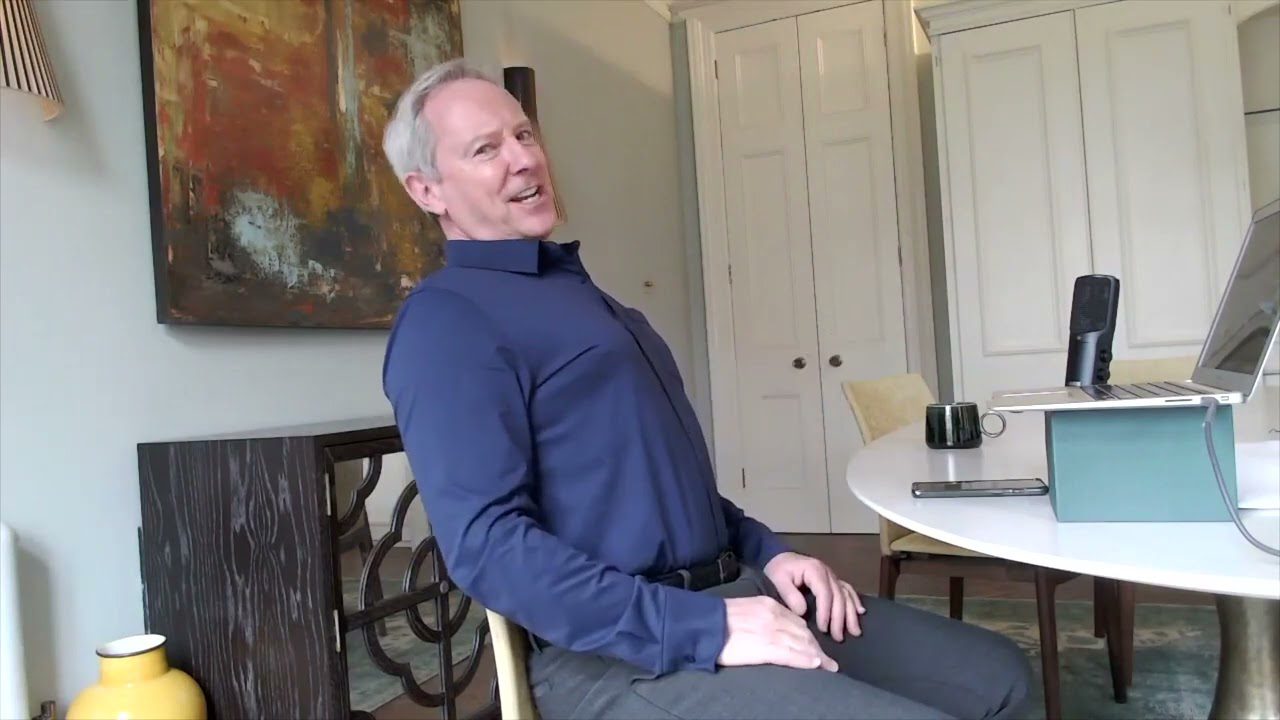As a communications coach, I’ve observed firsthand how the subtleties of non-verbal cues—be it a gesture, a posture, or a glance— influence the perception of a speaker.
Body language is an extension of our words and shapes the audience’s understanding and response to our message.
In this blog, I’ll explore seven body language practices to make, either when you’re speaking or listening to someone.
Maintain eye contact
Proper eye contact builds trust and keeps your audience engaged.
Imagine you’re giving a presentation or talking in a meeting. When you make eye contact with your listeners, it signals confidence and shows that you are genuinely interested in the interaction.
This direct gaze invites your audience into the conversation, making them feel valued and more likely to pay attention.

For instance, if you’re explaining a complex point, looking directly at your audience members can help gauge their understanding and encourage questions.
Conversely, avoid looking down at your notes too frequently, as this can break the connection.
Similarly, when listening, maintaining eye contact shows you’re actively engaged and processing what’s being said rather than letting your mind wander.
The goal is to strike a balance—maintaining eye contact about 70% of the time is a good rule of thumb. This approach keeps the communication open and interactive without overwhelming your audience.
Use open gestures
Consider the difference in perception when someone speaks with their arms crossed versus when they use open, expansive gestures, like spreading their arms slightly.
The latter not only makes you appear more welcoming and confident but also helps to physically engage your audience, drawing them into your narrative.
For example, when you describe growth or progress, a simple upward sweep of your hands can visually reinforce your message.

Similarly, gesturing towards yourself when sharing a personal anecdote can make your story more relatable.
These gestures should be natural and not forced; think of them as extensions of your message.
Remember, your aim is to complement your words with your body language, not distract.
Therefore, integrating open gestures thoughtfully can significantly enhance your communication, making it more impactful and memorable.
Practice good posture
Good posture is a silent but powerful communicator of confidence and authority.
Whether standing or sitting, aligning your spine, pulling your shoulders back, and holding your head high can dramatically alter how others perceive you.
Imagine entering a room to deliver a professional client presentation: by standing tall, you immediately command attention and convey a sense of self-assurance. This physical stance not only influences how others see you but also how you feel about yourself.
Research suggests that adopting a posture of confidence can actually boost your own feelings of confidence, creating a positive feedback loop.
When sitting in a meeting, resist the urge to slouch or lean too far back.

Instead, sit upright with your feet flat on the ground and lean slightly forward to show engagement. This position signals to others that you are active, attentive, and ready to contribute.
Smile genuinely
When a speaker smiles sincerely, it does more than just showcase friendliness; it breaks down barriers and fosters a connection with the audience.
Consider a scenario where you’re presenting to a group or engaging in a one-on-one conversation. Introducing your speech with a true, heartfelt smile can immediately set a positive tone, making you seem more relatable and trustworthy.

This non-verbal cue signals to your listeners that you’re not only confident in what you’re about to share but also that you’re genuinely pleased to be there with them.
Moreover, a real smile can be contagious, often leading to smiles in return from the audience!
This can significantly ease communication nerves, making the interaction more enjoyable for everyone involved.
Mirror your audience
This technique involves subtly adopting the posture, gestures, or facial expressions of the person or people you are engaging with.
For instance, if you notice your colleague leaning forward with interest, leaning in yourself can signal your engagement and shared enthusiasm.

This doesn’t mean copying every move, which can be perceived as mimicry, but rather subtly reflecting the general demeanor and energy level of those you’re speaking to.
When done with sensitivity and authenticity, mirroring can significantly enhance the feeling of kinship and trust.
It signals to your listeners that you are in tune with them, making your interaction feel more personal and meaningful.
Use facial expressions
When you’re talking, your face says a lot. Making sure your facial expressions match what you’re saying is key. If you’re excited about something, let your face show it with a big smile or bright eyes. Or, if you’re discussing something serious, a thoughtful or concerned look can really drive your point home.

It’s all about making your message feel real and genuine. Imagine telling a funny story with a straight face—it just wouldn’t have the same impact, right?
On the flip side, talking about something serious with a grin could confuse your audience or make you seem insincere.
So, always check in with your expressions. They’re powerful tools that can make your words hit home harder.
Be mindful of your voice
Your tone of voice is like the soundtrack to your words. It needs to vibe with your body language to really get your message across.
If you’re sharing something exciting, let your voice show that excitement. If it’s a serious talk, your voice should drop a bit, getting softer or more steady to match the mood.
Think about it: how weird would it be to tell a joke in a monotone? Or speaking about something sad without any change in your voice? It just won’t feel right.
Your tone can amp up what you’re saying big time, or it can throw people off. You essentially have to coach your voice to make sure it syncs with your body language.
It makes all the difference in making sure people not only hear what you’re saying but also feel it.
Wrapping up
Words have limitations–this is where good use of body language can add more weight and impact to the spoken words.
And it’s always worth supplementing your self-help practices with the support of an experienced public speaking coach who can provide you with more tailored guidance to make sure you’re not inadvertently giving off bad body language signals or enrol in my online public speaking short course that has a whole section dedicated to mastering your body language.
Good luck! And if you want to hear more from me, you can find me on:
- YouTube
- Behind the mic on the Art of Communication Podcast



